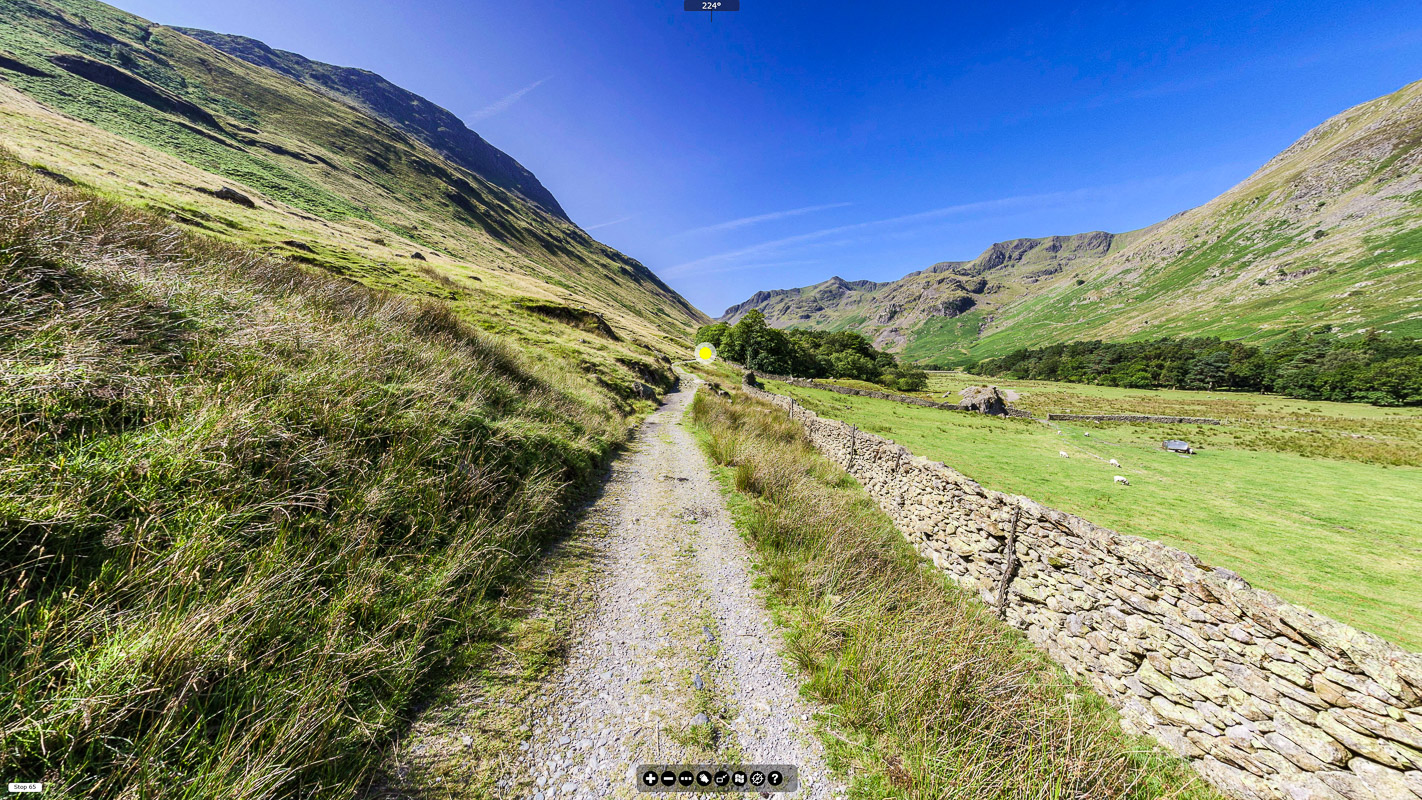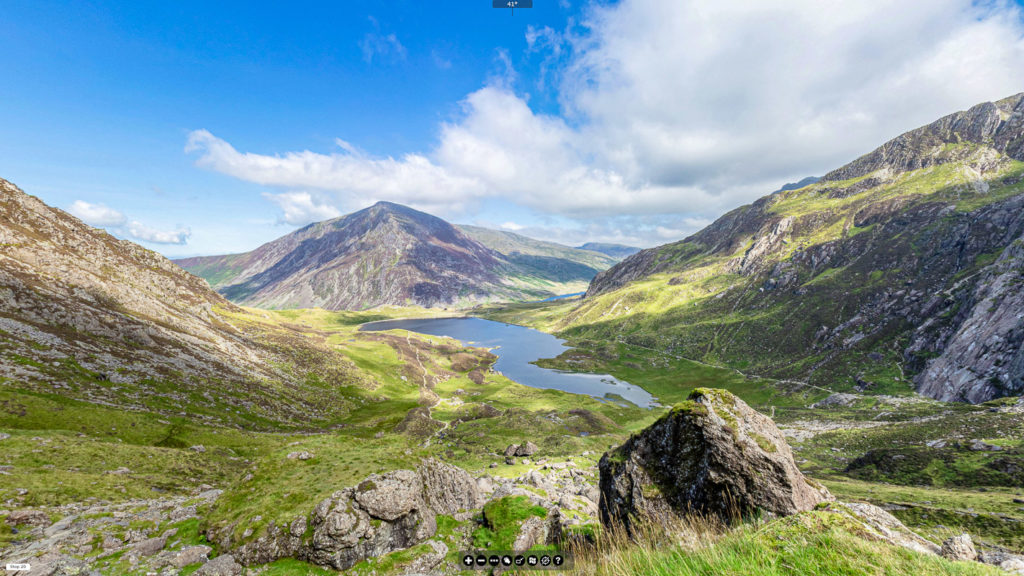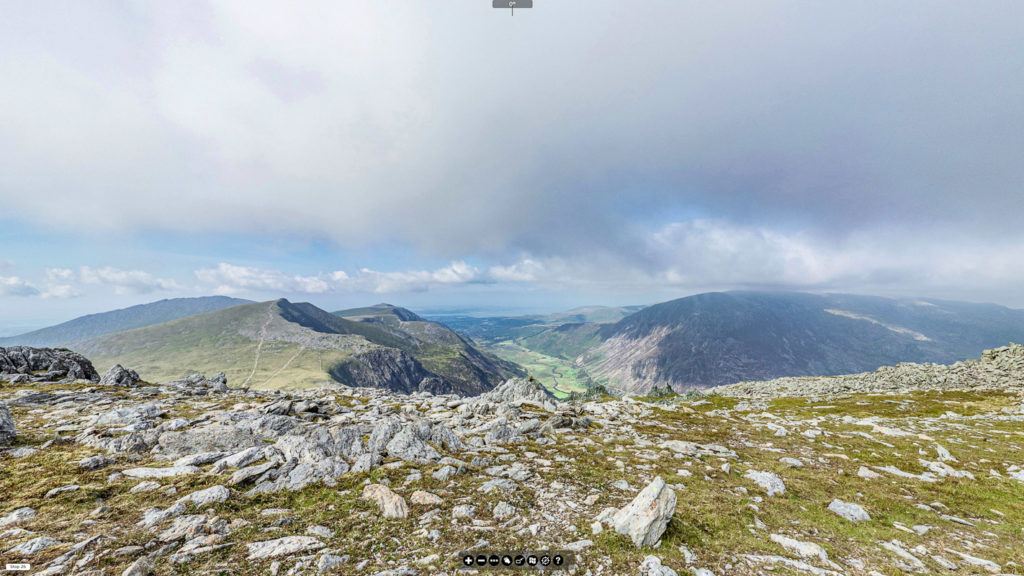Using virtual field trips to make in-person field experiences more inclusive
Introduction
We briefly review ways in which virtual field trips can be used to support in-person field experiences. A more detailed review of the literature is available separately.
This section focusses on what virtual fieldwork (used alongside ‘real’ fieldwork) has the potential to do well – supporting students and staff with disabilities, seen and unseen. As for other elements of fieldwork inclusion, such as those relating to ethnic minority and LGBTQ+ students and staff, the potential contribution of virtual fieldwork is much less apparent. Even so, a few scenarios can be envisaged where virtual fieldwork could make a positive contribution (see below).
There are two recurring and overlapping themes in the examples that follow:
1) Good practice for accessibility and inclusion benefits everyone, not just those with additional/different needs. However, these benefits are only realised if the virtual field trips are viewed as integral components of the educational experience for all students. In other words, they should be designed into the curriculum rather than being provided as ad-hoc solutions for individual students.
2) Developing and using virtual field trips to support in-person fieldwork takes time. Whilst it is possible to develop a virtual field trip relatively quickly, an element of planning is required if the intention is to create an effective educational resource for all participants. Examples of when and how such a resource could be used are considered below. For now, the key point is that virtual fieldwork development is—or should be—more than a purely technical exercise.
Table of Contents
Virtual field trips can enhance the educational experience of ALL students.
Virtual field trip development should be much more than a purely technical exercise.
Using virtual field trips to prepare for, and follow-up, in-person fieldwork
The prospect of fieldwork in an unfamiliar location can induce anxiety and stress in some participants (e.g., Bloggs, 2020; Table 1). In their strategies to make fieldwork more inclusive, Greene et al. (2022) recommend providing plenty of photos – and other relevant information – well in advance to help students visualise and prepare for the field localities to be visited.
Virtual field trips can fulfil this purpose, and much more besides. At the University of Worcester, for example, third-year Geography field courses to the English Lake District and the European Alps are underpinned by pre-visit immersive virtual field trips. For those with disabilities (seen and unseen), anecdotal feedback indicates these resources are very helpful in reducing anxiety in advance of fieldwork. Rather than the fixed perspectives provided by photographs and videos, these immersive, self-guided virtual field trips provide students with greater autonomy and understanding of the terrain.
Fieldwork to unfamiliar locations can induce anxiety in some participants. Greene et al. (2022) recommend providing plenty of photographs and other information to help students prepare. Virtual field trips can fulfil the same role.

Virtual field trips can help all students prepare for in-person field experiences. Although somewhat anecdotal, the introduction of a virtual field trip (shown here) to support a University of Worcester third-year residential trip to the Lake District appears to have reduced pre-fieldwork anxiety levels – at least those relating to physical fitness requirements. Prior to the introduction of the online resource, one or two students each year would express concerns about the amount of walking and the nature of the terrain. With the virtual field trip, students can see this for themselves. Of course, making fieldwork more inclusive involves much more than creating virtual field trips!
Preparatory virtual field trips can benefit all participants, not just those with disabilities (e.g., Jenkins and Williams, 1997; Stainfield et al., 2000). At Worcester, virtual field trips to the Alps and the Lake District are integral to the academic preparation for these field courses, which means time spent in the field is more productive. This is achieved by embedding these virtual field trips in pre-fieldwork modules and creating activities and assessments that demand meaningful engagement from ALL students.
The ability to revisit field localities following fieldwork is also hugely beneficial, as evidenced by anecdotal feedback from Geography students at Worcester. In terms of inclusion, such opportunities are greatly valued by those who struggled to take everything in during fieldwork. This could be due to a specific disability, although in practice all students can struggle on occasion. The extent to which a virtual field trip enables fieldwork to be revisited will obviously depend on the nature of the activities.
Virtual fieldwork as a fall-back for when things do not go to plan in the field
This project is about using virtual fieldwork to support, not replace, in person field experiences. Nevertheless, there may be occasions when a field activity is disrupted by poor weather, access issues, transport mishaps, or any number of other problems. Lawrence and Dowey (2021) highlight the additional stresses experienced by some students, including those with autism, when there is no backup plan. They suggest that, if all else fails, digital resources that can be explored back at base may be a reasonable backup. Virtual field trips to key sites, perhaps supplemented by additional resources (e.g., data, video), may also be helpful in this scenario.
There are also intermediate situations, where fieldwork is possible, but the field experience is constrained in some way – perhaps due to poor visibility. The latter can be problematic where mapping and field sketching requires the complete landscape to be visible, not just parts of it. This does not prevent fieldwork from taking place, but it does limit what students can achieve. The existence of virtual field trips to these field sites (in sunshine!) allows students to see what they missed in the field. Knowing there is a fall-back reduces stress for both students and staff in the field.
Virtual fieldwork for less accessible sites
It is clearly good practice to ensure that all field localities are accessible to all students. However, there may be good reasons why this is not possible. In such circumstances, Lawrence and Dowey (2021) recommend consideration is given to setting up portable Wi-Fi networks and utilising mobile technology – the Enabling Remote Activities (ERA) approach discussed by Collins et al. (2016). This allows those unable to reach the site to still engage with it in real time, albeit remotely. Not everyone will have the equipment, technical skills, and staff to set this up. Virtual fieldwork is a reasonable fall-back approach. It would not be a ‘live’ experience, of course, but potentially offers more immersion and greater autonomy.
Virtual field trips can also be used to replace hard-to-access sites for all students, which is arguably a more inclusive approach because no one is left out. Clearly a judgement call is required here as to what sites qualify for this approach, but isolated localities requiring a great deal of effort to reach may be good candidates.
“Where fieldwork grades into adventure tourism rather than a purposeful, educative experience, it reinforces casual ableism and excludes people with disabilities…”
(Lawrence and Dowey, 2021, p. xx).


For those studying glaciation in Snowdonia, Cwm Idwal (top) is one of the more accessible sites in the area. This makes it very popular with school, college, and university groups. In-person fieldwork here can be extended using virtual fieldwork to the summits (below), where a remarkable periglacial landscape of tors and blockfield dominates.
Using virtual fieldwork to support the move away from 'problematic' destinations
This project explores how virtual fieldwork can complement in-person experiences, making them more accessible and inclusive. Using them to replace problematic fieldwork destinations and support new venues is arguably straying off-course, but the scenario discussed here is in keeping with the inclusion theme.
As an example, LGBTQ+ staff and students may fear travelling to those countries where their status is criminalised. Anecdotal accounts on social media and online workshops indicate that field course leaders may attempt to justify these problematic destinations on the basis that they are outstanding in some way (e.g., geology, ecology) (see …).
Moving to a more inclusive venue could be facilitated if aspects of the original site could be captured in a virtual field trip. That is, the educational experience of the new, more inclusive venue could be extended by allowing students to explore, virtually, aspects of the original location.
The potential of virtual field trips to extend the range of environments that students can experience through in-person fieldwork alone is considerable, although this is beyond the remit of the current project.
Summary
Virtual field trips can play a part in making in-person fieldwork more inclusive, primarily through providing opportunities to prepare for, and follow up, time spent in the field. Students with disabilities are most likely to benefit from these opportunities, which should be carefully designed and embedded in the curriculum. Used in this way, virtual field trips can support all students and staff in getting the most out of fieldwork. In other words, using virtual field trips to make fieldwork more accessible and inclusive has much wider benefits.
This work is licensed under a Creative Commons Attribution-NonCommercial-ShareAlike 4.0 International License.






